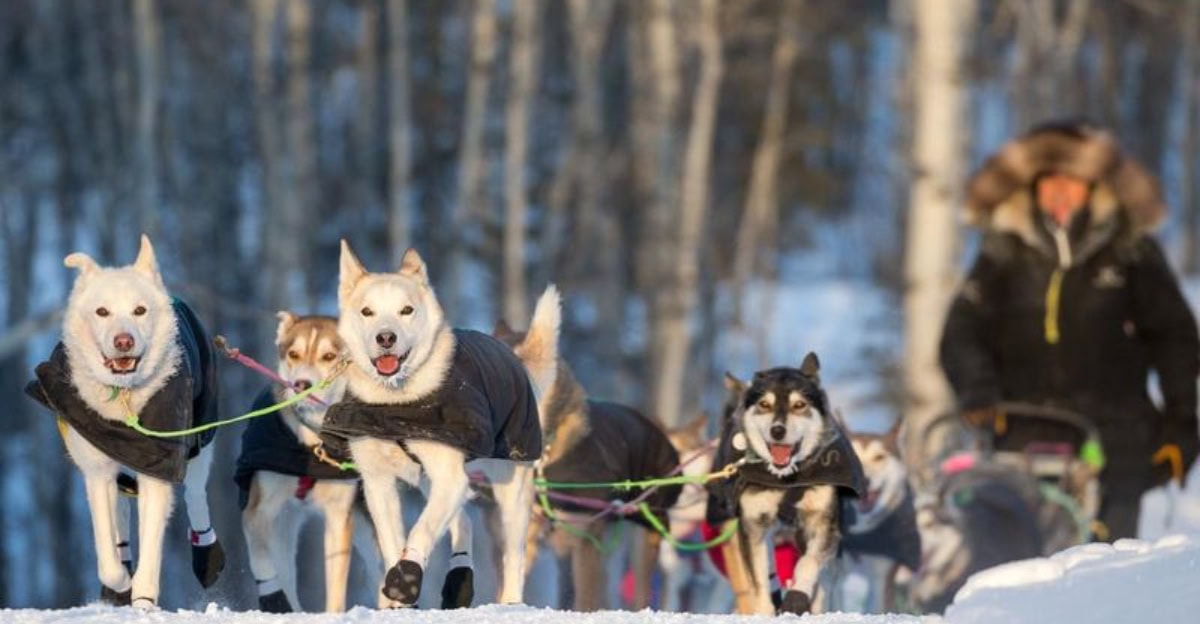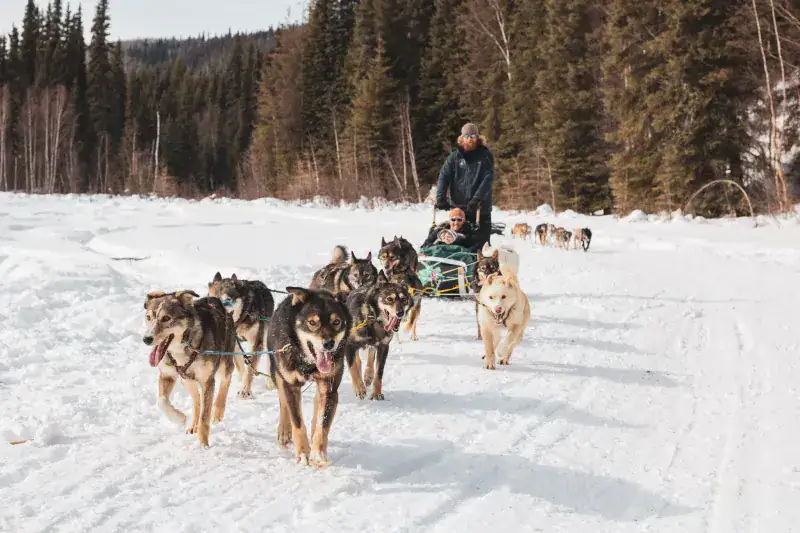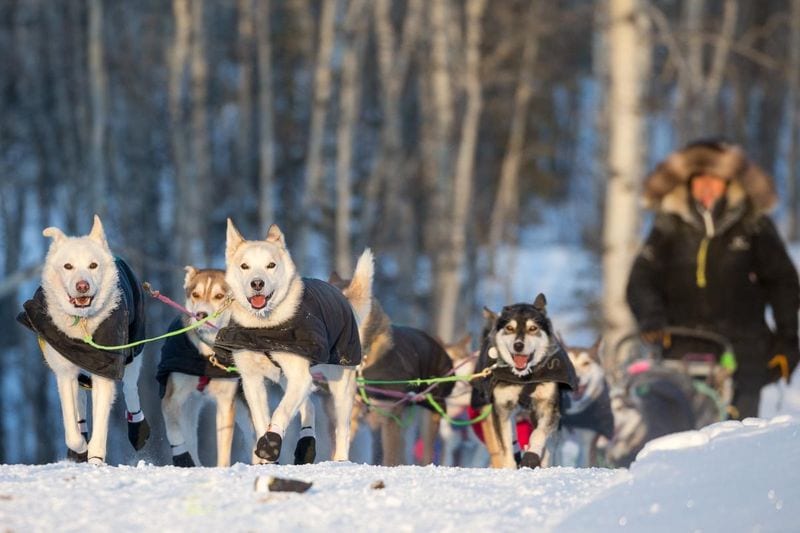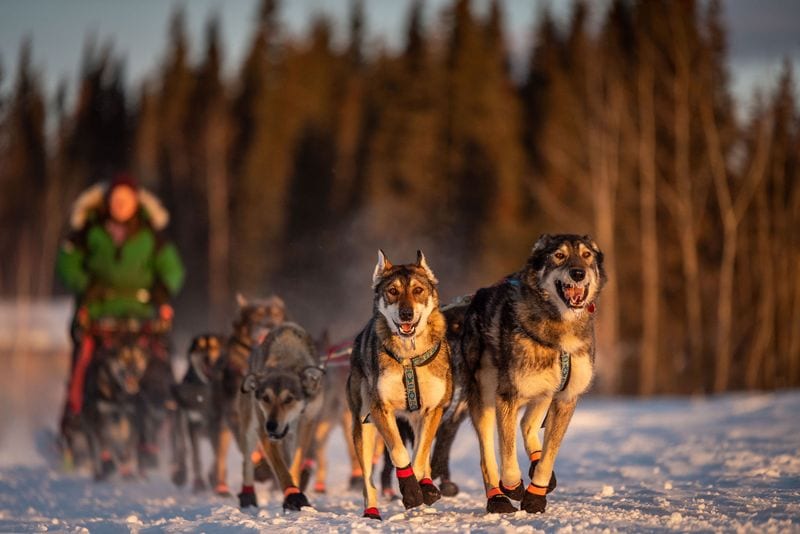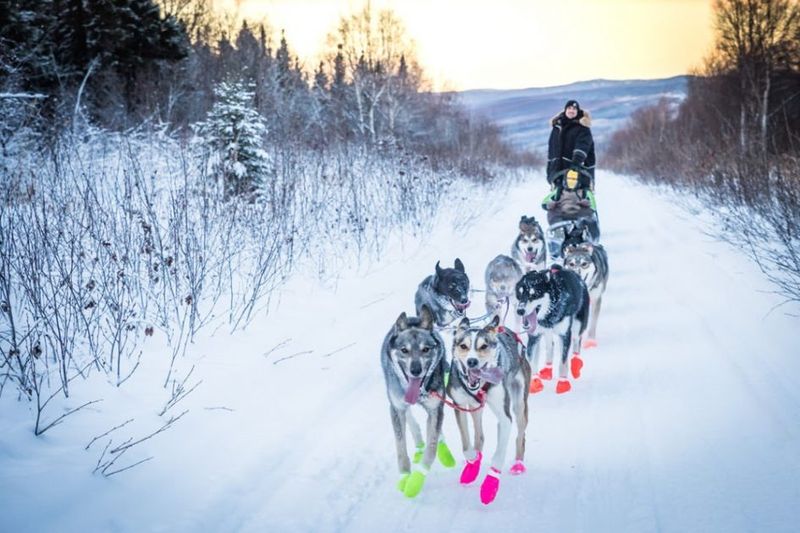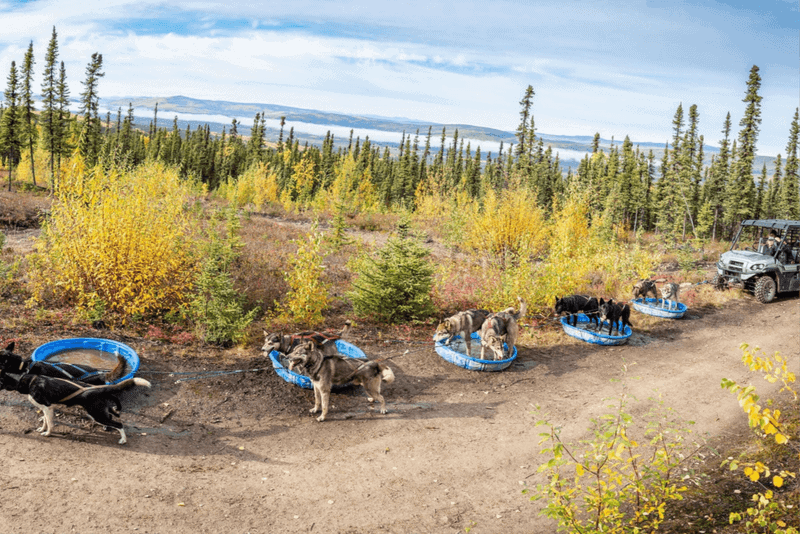Nestled in the heart of Alaska, Fairbanks sits between the historic village of Nenana and the whimsical town of North Pole, creating a perfect hub for one of Alaska’s most cherished traditions – dog sledding. Here, the jingle of harnesses and the excited barks of sled dogs aren’t just sounds of winter recreation; they’re the soundtrack of daily life. In Fairbanks, mushing isn’t simply a tourist attraction but a cultural cornerstone that connects residents to their rugged frontier heritage.
Fairbanks — Living the Mushing Way
Bundled against the biting cold, local mushers rise before dawn to tend to their eager teams. The relationship between musher and dog goes beyond partnership – it’s a bond forged through countless miles across snow-covered wilderness. Many Fairbanks families maintain kennels in their backyards, raising puppies destined for the trail from birth.
Children here often learn to handle sled dogs before they can ride a bike. Local schools even incorporate mushing into physical education, teaching youngsters the commands and techniques that have been passed down for generations.
What outsiders see as an extreme sport, Fairbanks residents view as commuting, socializing, and connecting with nature. The rhythm of feeding, training, and running dogs shapes the community calendar year-round, with summer training continuing on wheeled carts when snow melts away.
From Survival Tool to State Sport
Before snowmobiles roared through Alaska’s wilderness, dog teams were lifelines for isolated communities. Mail carriers, doctors, and traders relied on these four-legged engines to traverse the frozen landscape when all other transportation failed. The 1925 serum run to Nome – where mushers relayed diphtheria medicine across treacherous terrain – cemented dog sledding in Alaska’s identity.
Today’s races like the Yukon Quest and Iditarod trace historic mail routes, honoring this practical heritage. Fairbanks mushers still maintain emergency dog teams when modern technology falters in the harsh climate.
Unlike the Lower 48 where dog sledding exists primarily for recreation, Alaskan mushers often use their teams for hunting, checking traplines, and gathering firewood. This practical application continues alongside competitive racing, making Fairbanks a living museum of working dog culture.
A Hub for Real Mushing Culture
“Want to feel what -40 degrees is like while traveling at 10 mph behind eight furry engines?” jokes Jeff King, four-time Iditarod champion whose kennel sits just outside Fairbanks. Unlike tourist-centered operations elsewhere, Fairbanks kennels offer authentic immersion into mushing life.
Visitors can help harness dogs, learn commands, and experience the startling quiet that falls once the team hits its stride on forest trails. Many kennels open their doors year-round, letting guests witness the intensive summer training regimens involving swimming, hill climbing, and cart pulling.
Local mushers host community events where knowledge transfers organically between generations. The annual Mushers Hall potluck becomes a masterclass in dog care, trail safety, and wilderness navigation. Here, the line between enthusiast and professional blurs as everyone from weekend hobbyists to Iditarod veterans shares tips over homemade moose stew.
A Town Steeped in Sledding Legacy
Fairbanks streets bear names like “Yukon Quest Avenue” and “Musher’s Hall Road,” physical reminders of how deeply dog sledding is woven into local identity. The town’s calendar revolves around racing events that transform quiet neighborhoods into bustling hubs of activity, with volunteers opening homes to visiting mushers and their teams.
Bronze statues of legendary local mushers stand in downtown parks, while the Fairbanks Community Museum houses artifacts spanning a century of mushing innovation. Even local breweries celebrate this heritage with beers named “Lead Dog IPA” and “Trail Breaker Stout.”
School children create science projects analyzing snow conditions for optimal mushing, while high schoolers earn physical education credits by participating in junior racing programs. This intergenerational connection ensures that even as technology advances, Fairbanks remains faithful to the tradition that helped establish it as a northern outpost.
Winter Tours & Summer Training
The crack of a sled runner breaking through spring ice signals transition time in Fairbanks. As snow melts, mushers swap sleds for wheeled carts, continuing training through summer’s midnight sun. Kennels buzz with activity as handlers condition dogs on dirt trails, swimming holes, and custom-built treadmills.
Summer visitors discover a different side of mushing culture – puppy socialization sessions, harness-making workshops, and demonstrations of the year-round work maintaining a competitive kennel. Many mushers supplement income by offering behind-the-scenes tours where guests bottle-feed puppies while learning about breeding programs designed to produce dogs with both speed and stamina.
By September, excitement builds as temperatures drop. Training runs lengthen as teams prepare for winter’s racing circuit. For tourists seeking authentic experiences, Fairbanks offers something rare – witnessing both the glamorous race days and the countless hours of preparation that make them possible.
